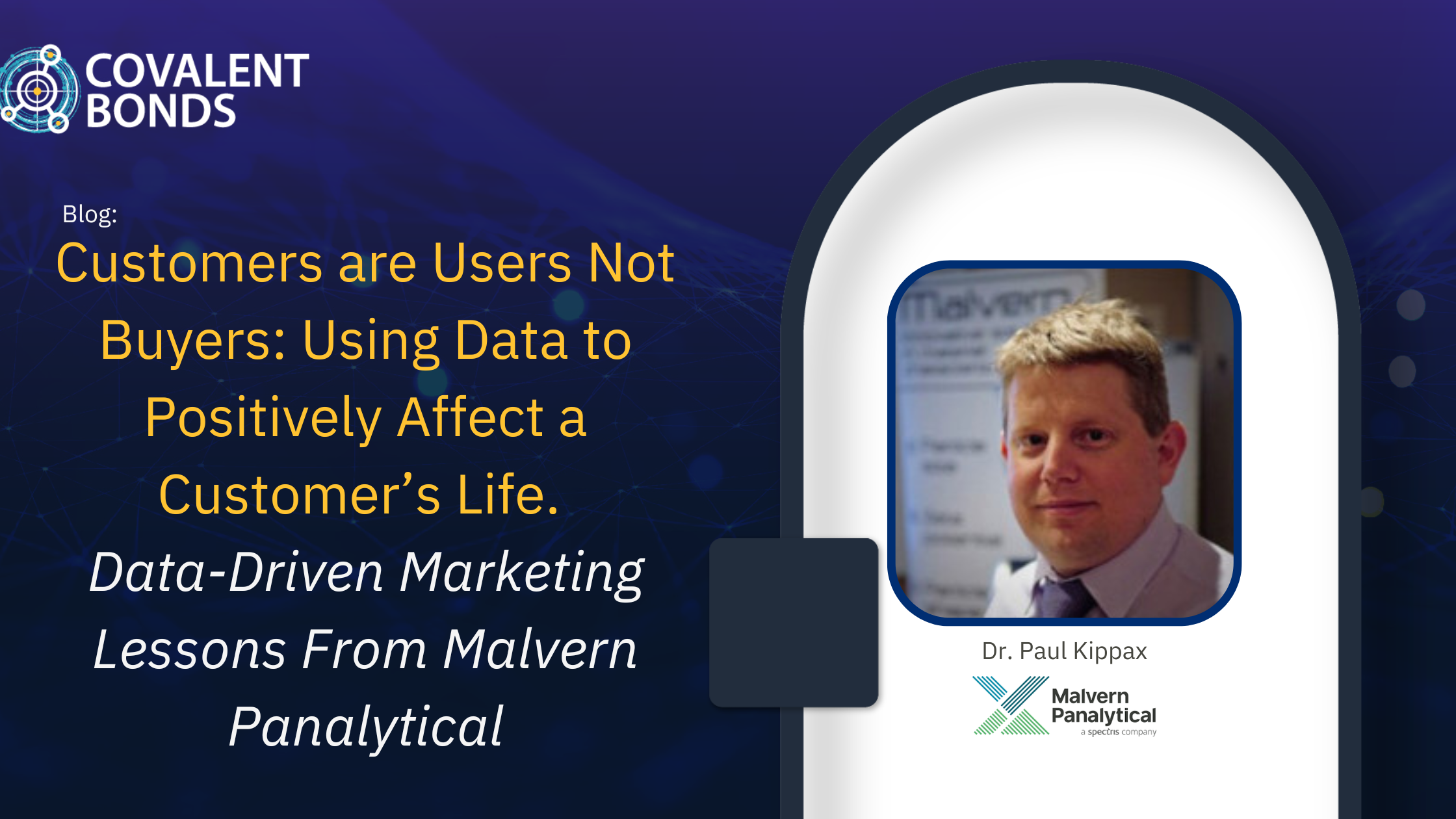Author: Dr. Paul Kippax, Sector Marketing Director, Pharma & Food, Malvern Panalytical
Successful brands approach customers as users not buyers. They are not focused on how to make ‘messages resonate’ with an audience, but on providing solutions to an identified challenge. In order to do this, marketing teams need to be much closer to the customer than ever before, both in terms of direct 1:1 interactions and data collection. Malvern Panalytical, a world leading instrumentation company, was one of the first companies in our industry to embrace a data-driven marketing approach. Read on to uncover some of the insights I gained from taking part in this process:
- Really Understand Your Customer’s World
Malvern Panalytical’s entire philosophy is based on considering how do I (the company) affect the life of the customer I am working with? We are not interested in selling a solution if it doesn’t fit a workflow nor provide a valuable outcome for the user. We therefore encourage close connections between the company and the user, to really understand what they need, before we develop a solution and start marketing it.
- Optimize Data Collection From The Customer
Balancing the need to gather data on a customer with what is reasonable to collect is an art form. Most data at Malvern comes through the website. We can turn off customers very quickly with complex asks, if we are not careful. So it is critical to have a team dedicated to gathering the data, but who is also responsible for ensuring data quality.
- Break Down Silos Between Different Functions
Strategic marketing is the driver of the marketing initiatives at Malvern: we have to understand the customer requirements, then work with marketing communications to communicate these insights. We use data gathered by our analytics teams to inform our insights, which in turn help the marcoms team to determine which tactics to use, such as an ABM program. Our data collection teams, analytics, sector marketing and marcoms teams all need to work together seamlessly to enable this to work. Siloed functions are the enemy of agile marketing.
- Regularly Monitor the Customer Journey
Regularly monitor the data from tools such as Salesforce (at least monthly) to determine if you are seeing the response you would hope to see. Predicting the future is imprecise at best, so be prepared to be surprised by what the data tells you, and be ready to respond and pivot accordingly
- Agile Marketing Does Not Mean Changing Strategy Constantly
It is important to maintain your strategic vision. Do not let the data sway you too far from what you are ultimately trying to achieve. The data can help you correct course, but is only one signpost along your journey.
These are just some of the lessons I have learned at Malvern Panalytical. Listen to my podcast episode of ‘Talk Life Science Marketing’ to hear more.



